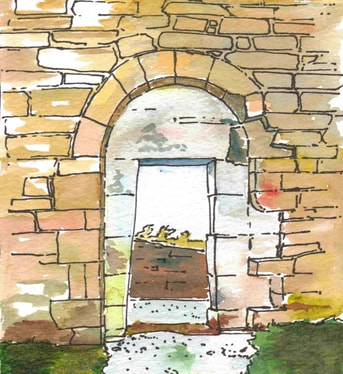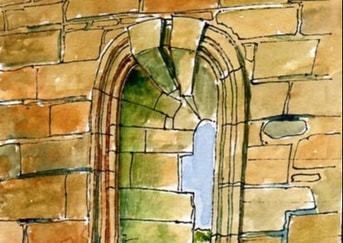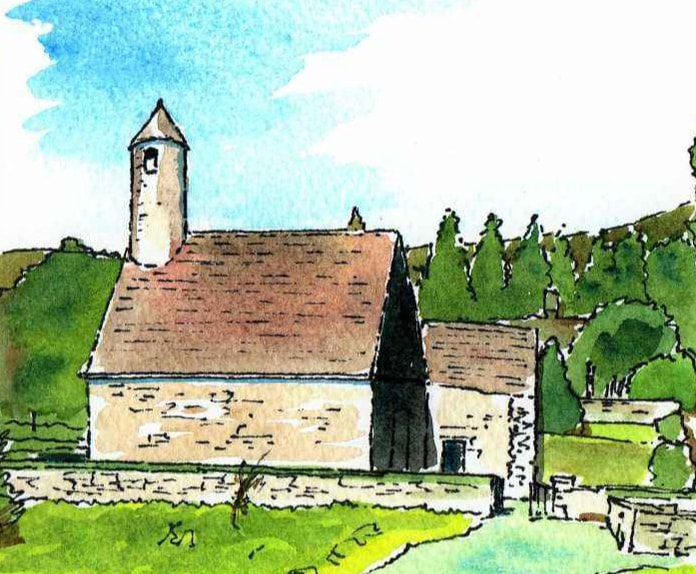viking Limavady
|
By the eleventh century, the influence of Roman architecture had filtered into the region and the Romanesque Style, which displaced openings with flat heads in favour of ones with arched heads, started to be adopted. A good example of this change is the entrance door to Banagher church, where the inside of a traditional entrance door with flat head and angled sides is a perfect arch.
Over the next 100 years the style became more decorative with doors becoming flanked by columns and receding towards the entrance with decorative arches above. Windows also became more decorative with internal surrounds as also found at Banagher and Dungiven. The other innovation of the period was the round tower, to watch out for raiders in the Lough. Such a structure may have been found at Tamlaght Finlagan Church where the base of a circular tower within a rectangular enclosure is attached to the church. This is likely to have looked something like St Kevin's Church in Glendalough Co Wicklow. The Vikings themselves are recorded to have raided the area many times from the late 8th century. In 919 over 32 ships are recorded as having entered Lough Foyle it must have been a terrifying sight. However, the vikings never permanently settled here, as they did in other parts of the island. |
|
Door, Banagher Church
Romanesque window, Banagher.
St Kevin's, Glendalough, Co Wicklow.
|




